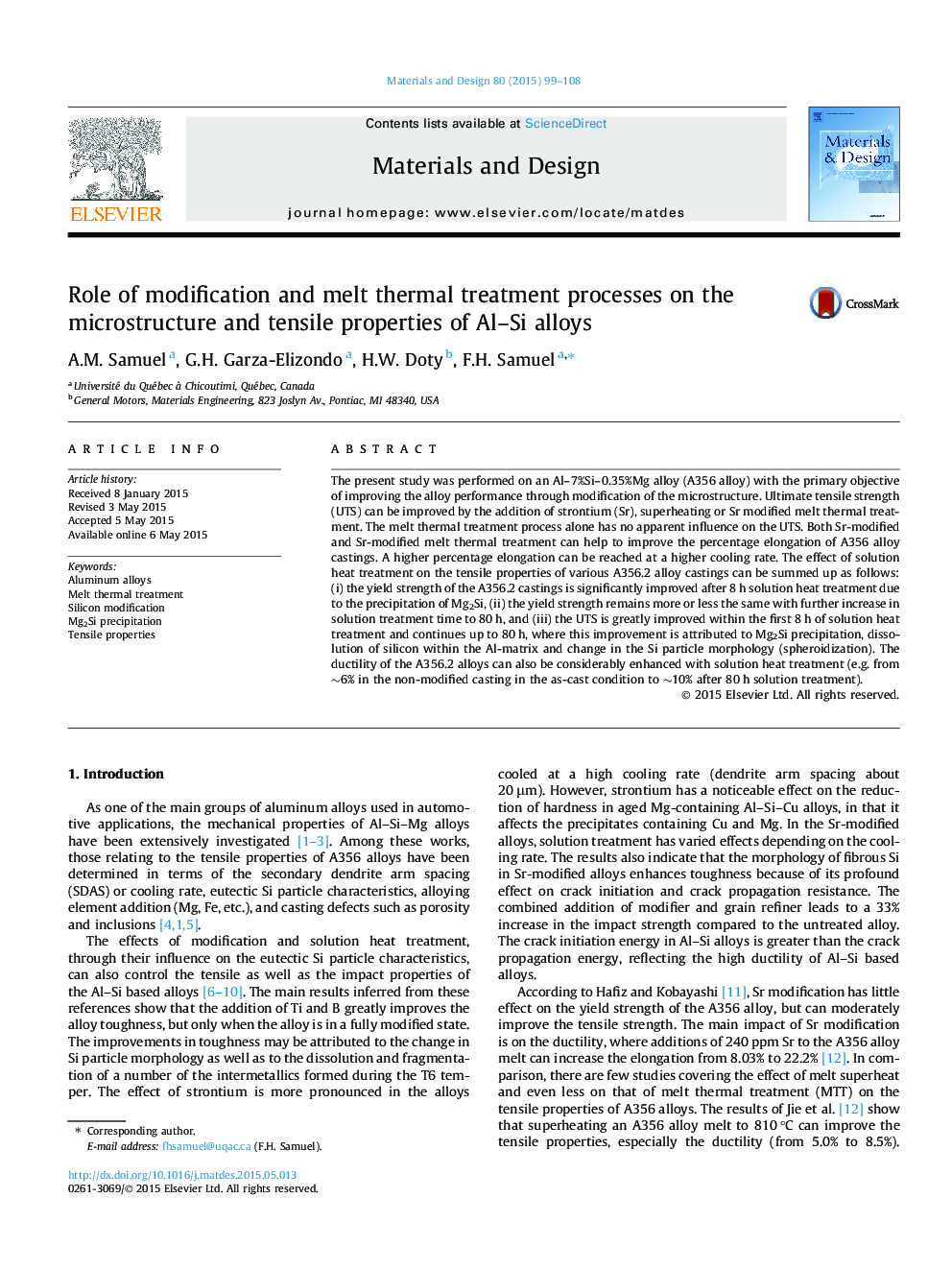| کد مقاله | کد نشریه | سال انتشار | مقاله انگلیسی | نسخه تمام متن |
|---|---|---|---|---|
| 828534 | 1470317 | 2015 | 10 صفحه PDF | دانلود رایگان |
• High tensile strength applying the melt thermal treatment process.
• Enhanced ductility by changing the Si particle morphology.
• Control of the dissolution and precipitation of Mg2Si phase.
• Establishment of the fracture mechanisms of Al–Si–Mg alloys.
The present study was performed on an Al–7%Si–0.35%Mg alloy (A356 alloy) with the primary objective of improving the alloy performance through modification of the microstructure. Ultimate tensile strength (UTS) can be improved by the addition of strontium (Sr), superheating or Sr modified melt thermal treatment. The melt thermal treatment process alone has no apparent influence on the UTS. Both Sr-modified and Sr-modified melt thermal treatment can help to improve the percentage elongation of A356 alloy castings. A higher percentage elongation can be reached at a higher cooling rate. The effect of solution heat treatment on the tensile properties of various A356.2 alloy castings can be summed up as follows: (i) the yield strength of the A356.2 castings is significantly improved after 8 h solution heat treatment due to the precipitation of Mg2Si, (ii) the yield strength remains more or less the same with further increase in solution treatment time to 80 h, and (iii) the UTS is greatly improved within the first 8 h of solution heat treatment and continues up to 80 h, where this improvement is attributed to Mg2Si precipitation, dissolution of silicon within the Al-matrix and change in the Si particle morphology (spheroidization). The ductility of the A356.2 alloys can also be considerably enhanced with solution heat treatment (e.g. from ∼6% in the non-modified casting in the as-cast condition to ∼10% after 80 h solution treatment).
Figure optionsDownload as PowerPoint slide
Journal: Materials & Design - Volume 80, 5 September 2015, Pages 99–108
